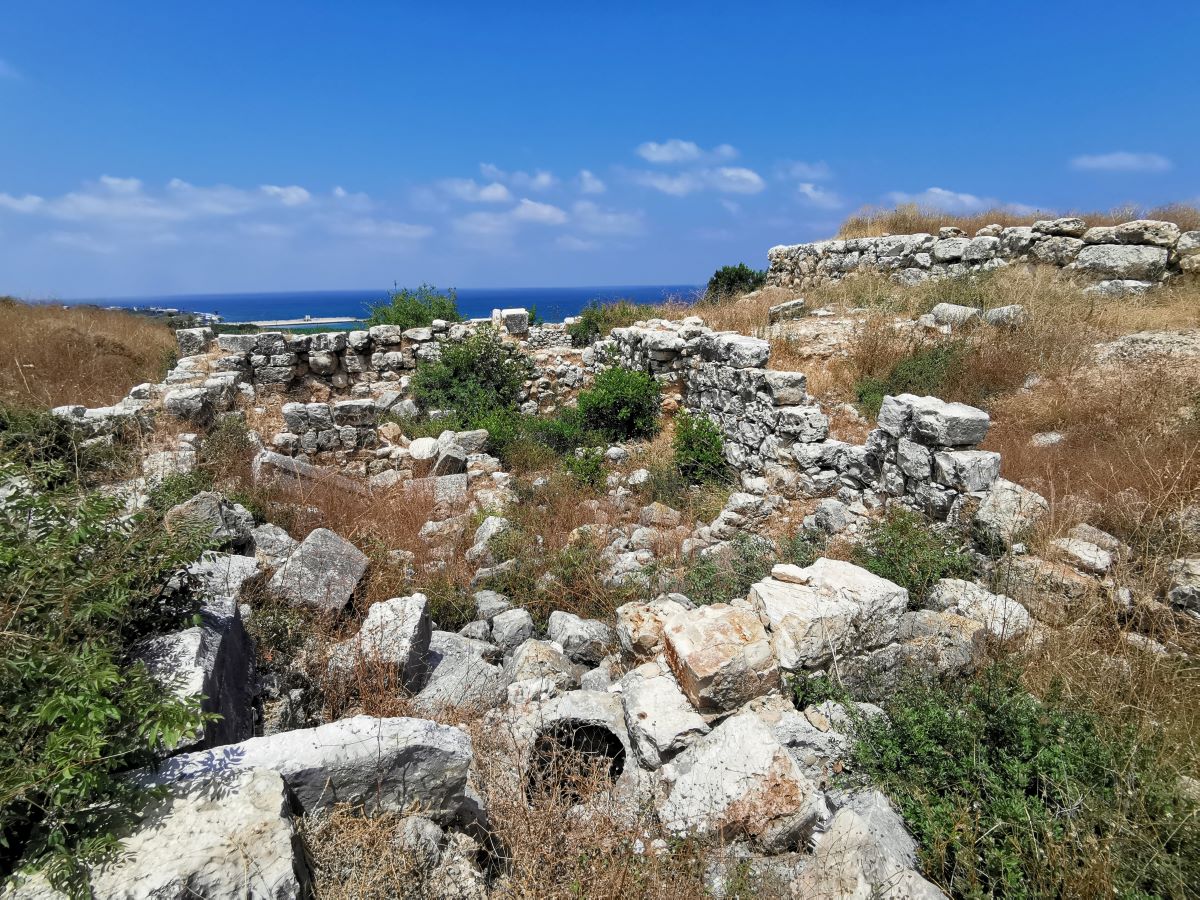Naqura town houses the remnants of an ancient urban agglomeration, known as Umm El-Amed.
Toponym
Umm El-Amed may be referenced as Hammon in Joshua 19:28 – חמון – as the ancients called it. This proposition is still doubtful due to the lack of further evidence.
In addition, it may be referenced as “Alexandroschene”mentioned in the Itinerarium Burdigalense (Bordeaux Itinerary).
Umm (Mother) El-Amed (Columns) may be a local designation based on the large number of columns found on site.
Particularity
Umm El-Amed is the richest site in Phoenician inscriptions known to date.
It is also the last site that represents Phoenician culture during the Greek era.
Timeline
8th / 7th century BC – first signs of habitation or commercial activities are attested on site.
4th / 3rd century BC – a settlement and two temples are developed on site.
1st century BC – The site is deserted during the Roman era.
4th century AD – the site is poorly reoccupied during the Byzantine era.
1772 – The site is mentioned by archeologist Louis-Francois Cassas.
1861 – The site is studied by famous archeologist and traveler Ernest Renan.
1943 – 1945 – the site is deeply excavated and studied.
Structures
The site features the remnants of Greek and Byzantine era structures with local influences that testifies the importance of the site during antiquity.
The following structures can be noticed:
Settlements – Cubic and rectangular shaped houses and workshops cover the western and northern section of the site, connected by zigzag alleys.
Workshops – Many of the workshops housed oil presses, witnesses to the town’s main industry.
Temple of Milk’ashtart – this isolated temple was erected on the south-western end of the site, dedicated to Milk’ashtart, the main god of the site. Other deities revered at this temple include Astarte, Baalsamem, Baal Esmun on the one hand,Egyptian deities such as Osiris, Isis, Horus, Amun und Bastet on the other.
The Phoenician architecture of the temple reflects Egyptian influence, and was remodeled several times.
During the Byzantine era, the temple enclosure housed a small village and its sacred enclosure become a church.
The East Temple – this religious building lies on the eastern side of the site. There is a probability that it may have been dedicated to Astarte, the consort of Milk’ashtart, based on the similarities between the two temples. The building was open widely to the residential area, surrounded by shops and alleys.
Graves – 3 necropolises were recognized outside the site.
Other materials – a sundial, many ceramics, lamps and figurines, stamped handles and coins were identified during excavations. In addition, many divinity statutes, funerary steles and Phoenician inscriptions found on site were relocated to the National Museum of Beirut, as well as the Louvre.
The site is currently being studied by a joint collaboration of local and Italian archeologists.
Karim Sokhn
Tour Operator & Tour Guide
References:
Maurice Dunand etRaymond Duru, Oumm El-‘Amed. Une ville de l’époque hellénistique aux échellesde Tyr.
Mediterranean Grottos and the Umm El-Amed: Coastal Shrines and Regional Inland Temples.






